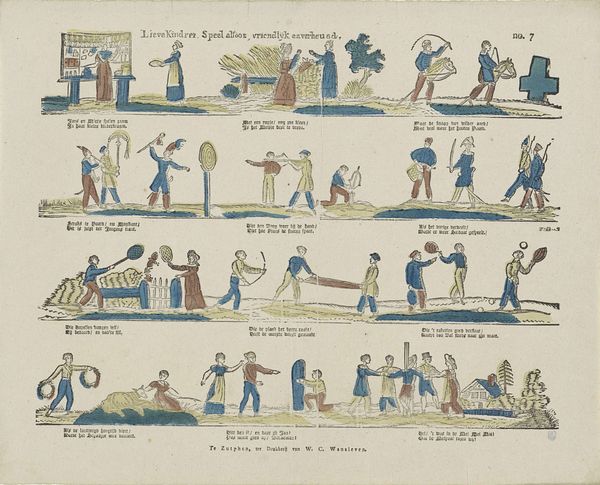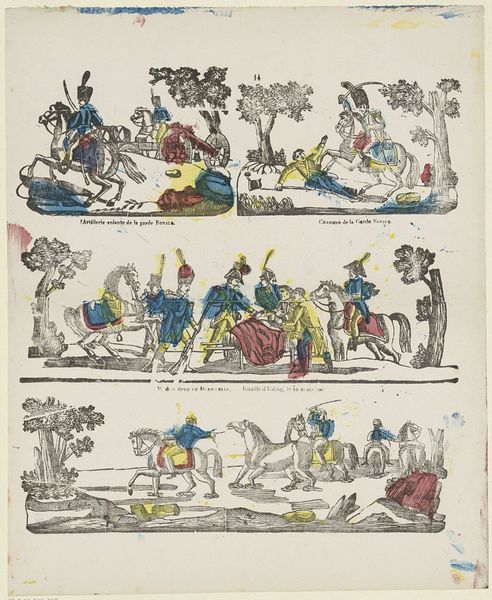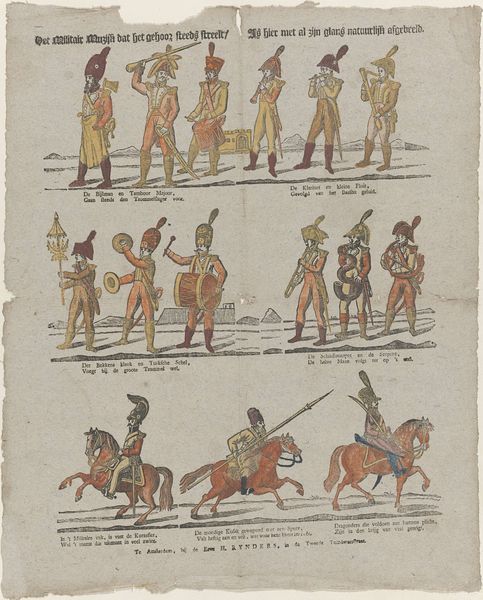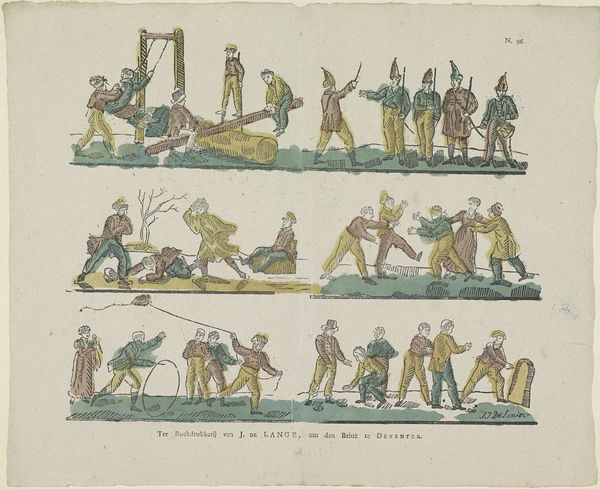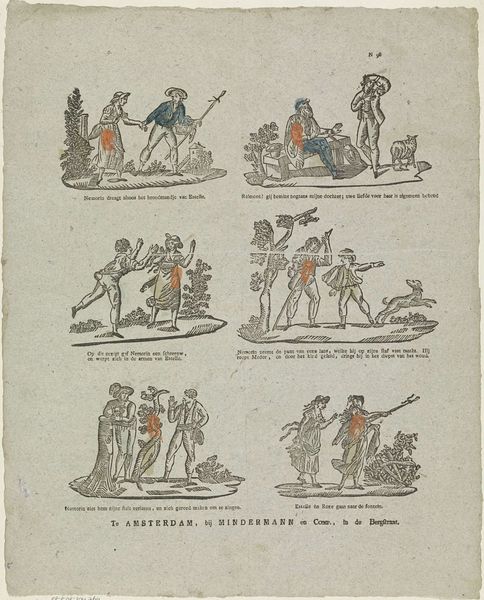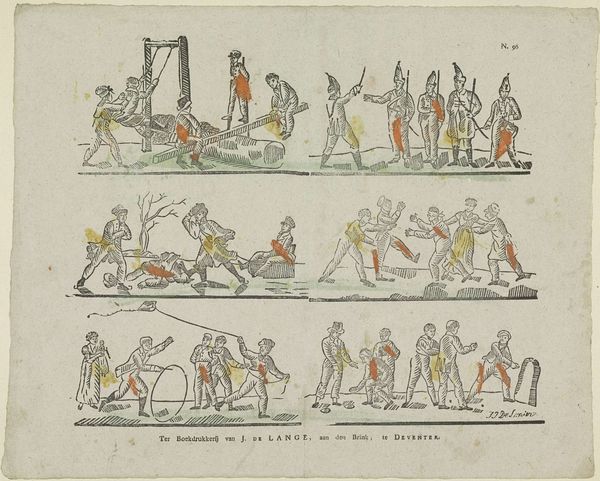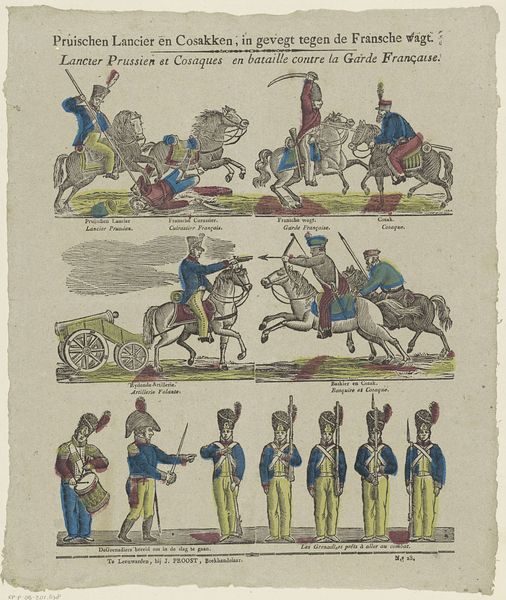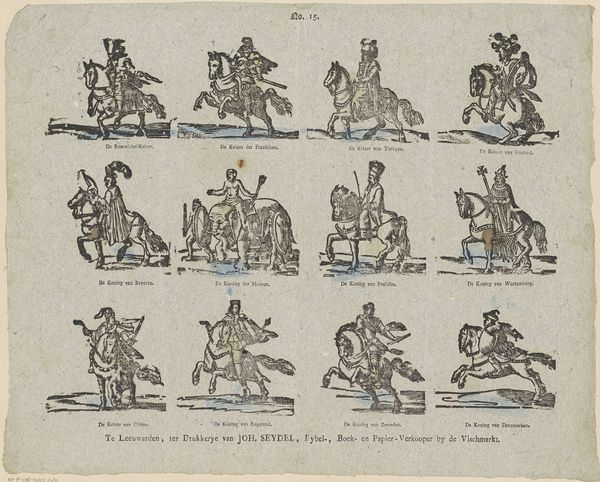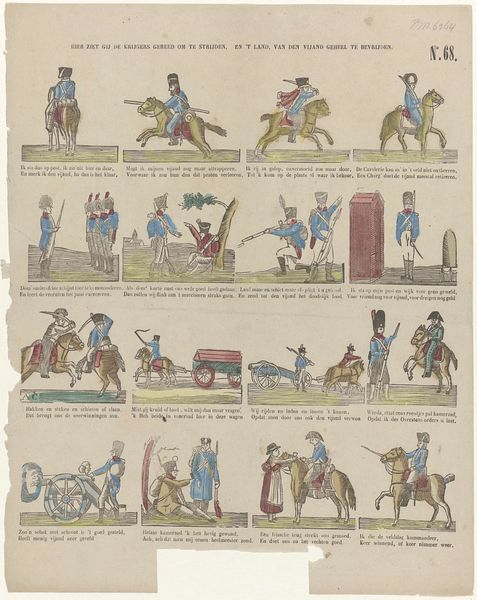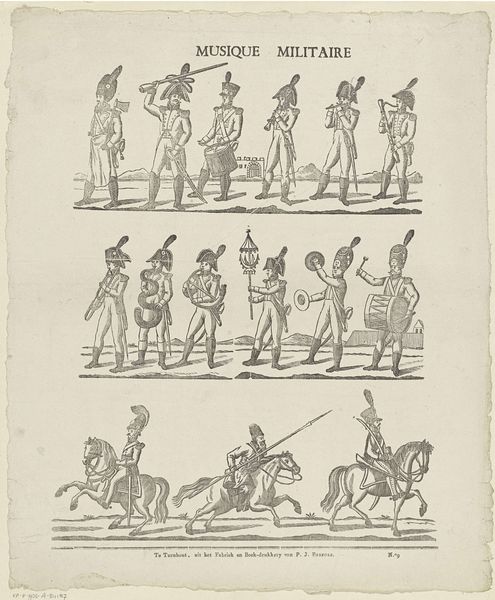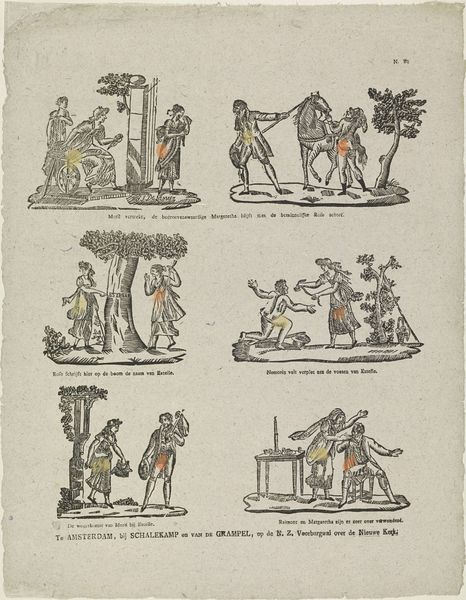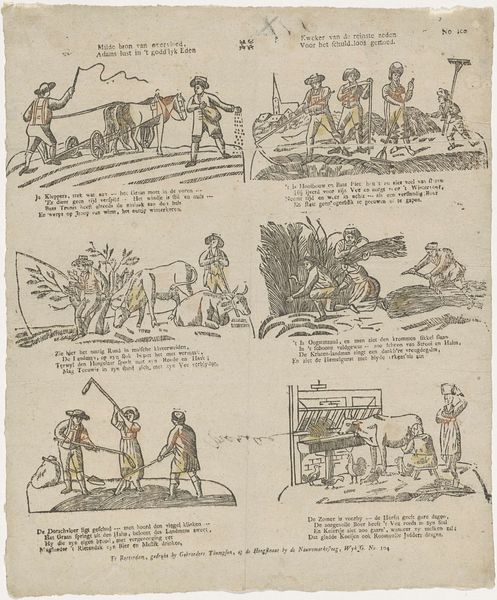
Divertissemens du carnaval / Vastenavondsche vermaken / Convoi funèbre de carnaval / Vastenavondsche lykstatie 1800 - 1833
0:00
0:00
philippusjacobusbrepols
Rijksmuseum
print, paper, engraving
# print
#
figuration
#
paper
#
folk-art
#
romanticism
#
comic
#
line
#
genre-painting
#
history-painting
#
academic-art
#
engraving
Dimensions: height 335 mm, width 418 mm
Copyright: Rijks Museum: Open Domain
Curator: This engraving by Philippus Jacobus Brepols, likely created between 1800 and 1833, is titled "Divertissemens du carnaval / Vastenavondsche vermaken / Convoi funèbre de carnaval / Vastenavondsche lykstatie," held here at the Rijksmuseum. What strikes you about this composition? Editor: Immediately, it feels like controlled chaos. There's a rigid structure in the layering of scenes, but each vignette teems with frenetic energy and almost clownish figures. The minimal color palette, line-based depiction, and shallow space give it an appealing decorative quality, somewhat like wallpaper. Curator: Indeed. Its presentation in stacked registers echoes earlier forms of narrative art, while the figures demonstrate a contemporary Romantic sensibility expressed in its linear precision and anecdotal detail. We should also consider this work as part of a broader societal phenomenon... namely, how cultural events and seasonal shifts affected representation and meaning in the public sphere. Carnival was about transgression and temporarily upending norms. Editor: And Brepols uses visual contrasts to emphasize that point. Observe how the buoyant celebration in the top registers clashes with the somber "funeral procession" along the bottom, which mimes and mocks authority as it simultaneously acknowledges mortality. The artist uses these juxtapositions to create a symbolic dynamic. Curator: Quite so. The arrangement certainly highlights those polarities, setting them against one another. Given that Carnival was closely tied to religious practices and the liturgical year, and thus publicly contested with considerable political meaning, prints such as this were integral parts of popular culture. Editor: Right. Beyond the content itself, its visual language invites examination of form over substance; how it utilizes semiotics to represent something beyond the event and become more universal than an illustration from this particular date range, and its value beyond that singular representation. The emphasis isn't simply on historical accuracy; Brepols appears to make the scene into a theater, reflecting and critiquing society using archetypes and exaggeration. Curator: So well articulated! The way such a simple print captures those dynamics remains genuinely impressive even now. Editor: I agree. Reflecting on how carefully each figure is placed contributes significantly to an appreciation for the artist's skill and the period's complex cultural tapestry.
Comments
No comments
Be the first to comment and join the conversation on the ultimate creative platform.

